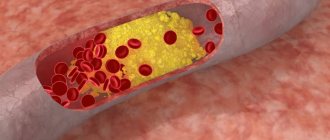Multiple sclerosis as a basis for disability
Very often, MS leads to serious damage to certain areas of the brain and spinal cord. In humans this manifests itself:
- in speech impairment;
- deterioration in coordination of movements;
- numbness of the limbs up to complete loss of motor function;
- problems with mental state and other symptoms that do not allow him to continue working.
Diagnosis of multiple sclerosis
One of the dangerous diseases of the central nervous system is multiple sclerosis, which destroys cells in the brain and spinal cord.
Therefore, in MS at certain stages, one or another disability group is assigned. However, in some cases, the disease may manifest itself in the form of symptoms only periodically, no more than once or twice a year. However, such symptoms can only slightly affect the ability to work.
Thus, the very fact of detection of MS does not necessarily mean the assignment of a disability group. In each individual case, this must be decided by a medical commission by conducting a medical and social examination (MSE). At the same time, in the decision-making process, doctors pay attention primarily to the coordination of the patient’s movements.
In this regard, there are the following criteria for selecting one of the groups:
- III gr. – the presence of mild or moderate impairment of motor function while maintaining ability to work;
- II gr. – the pathological state of the central nervous system has pronounced symptoms;
- I gr. – serious violations lead to severe loss of coordination of movements up to the complete loss of the patient’s motor ability.
Thus, disability requires serious diagnosis, and various forms of MS can become the basis for assigning any of the groups, from the third to the first.
Classification according to the course of the disease
- Remitting (relapsing). The most common (typical) form. It is also called stage 1 multiple sclerosis. With it, rare cases of exacerbation alternate with remissions, sometimes lasting for years. Although the exacerbation stage can last from several days to months, the affected areas of the brain can restore their functionality either partially or completely.
- Primary progressive. This form of multiple sclerosis is characterized by an imperceptible onset and a slow but irreversible deterioration in the patient's health. Despite the absence of acute exacerbations, it leads to absolute loss of ability to work twice as quickly.
- Secondary progressive. At the beginning of development, this form resembles a remitting form with its alternation of exacerbations and temporary improvements in health. At later stages, it is characterized by a transition to a progressive form.
- Progressive-remitting. The rarest variety in which the disease, starting with a remitting course, becomes primary progressive. After exacerbations, neurological functions are not restored, and pathological symptoms increase significantly.
This classification is described in more detail in our article “Multiple sclerosis: forms and stages”
Diagnosis of the disease is possible only by undergoing a comprehensive examination by a neurologist, an obligatory part of which is MRI (magnetic resonance imaging), which reveals foci of pathology in the brain. The diagnosis is made only if clinically confirmed.
Indications for medical and social examination
To obtain a group of limited work ability, you must pass the Medical Labor Expert Commission (VTEK). It is convened after the patient contacts his therapist or the head physician of the medical institution.
If specialists consider the existing grounds sufficient for the work of VTEC, then the patient’s personal file will be transferred to representatives of the commission to prescribe the tests and studies necessary for this procedure.
A meeting of the commission on the issue of assigning a disability group can take place:
- in the management of VTEK;
- at the home of a patient suffering from MS;
- in the hospital where the patient is being treated.
Nutrition for multiple sclerosis
Proper nutrition for multiple sclerosis significantly affects the patient’s well-being.
In this case, the following factors may be the basis for convening a medical and labor commission:
- Due to the symptoms of the disease, the patient cannot perform work in accordance with his job responsibilities or there is a forced need to significantly limit the workload.
- After a person sought medical help and was diagnosed, the prescribed course of treatment did not produce significant results. The patient's condition did not improve. Multiple sclerosis leads to serious pathologies that severely limit the life of the patient.
- The patient's condition is noticeably deteriorating due to the progressive disease, which has become permanently chronic.
- Due to the pathology, a person is temporarily disabled for more than 4 months.
It should be noted that the list of these grounds may be subject to correction depending on the patient’s condition and the attending physician’s conclusion about the need for a VTEC meeting or its absence.
Instructions: how to apply for disability
New rules for obtaining disability have made the examination procedure simpler. Now the medical organization independently transmits the referral to the ITU electronically; citizen participation in the process is not necessary. The procedure became possible with the adoption of Government Resolution No. 607 of May 16, 2019. The Ministry of Labor of the Russian Federation, in letter No. 13-4/10/B-4132 dated May 29, 2019, explained the provisions of the new regulatory act.
Let's look at getting disability in 2021 step by step, taking into account the new rules.
Step 1. Receive a referral to ITU or a certificate of refusal to be sent to ITU.
A referral, subject to the consent of the person in writing, is issued:
- by a medical institution upon implementation of a set of measures, despite which persistent impairment of body functions persists;
- Pension Fund or social security - in the presence of documents that confirm deviations in functions due to illness, injuries, defects.
The referral to the ITU is transmitted to one of the specified organizations via electronic communication channels, or, if there are none, on paper.
Upon receipt of a refusal, a person is issued a certificate, in the presence of which he applies to the ITU independently.
Step 2. Prepare the required documents.
The following documents are required to complete the procedure:
- consent of the person in writing to conduct MSE;
- ID card or its certified copy;
- document proving the identity and authority of the representative (if the application is made through a representative);
- referral to ITU or certificate of refusal in such a referral;
- application for an ITU (when a citizen is issued a certificate of refusal to be referred to an ITU);
- medical documents that make it possible to establish the causes of disability;
- medical documents to determine the degree of loss of ability to work;
- conclusion of the medical commission of a medical organization confirming that for health reasons the citizen is not able to come to the MSA office, and therefore he requires MSA at home.
Step 3. Wait for the invitation to the ITU.
There is no longer any need to contact ITU. After receiving documents from the medical organization, the ITU sends an invitation to the patient, which indicates the date, time, and place of the examination.
Step 4. Go through the ITU and get a solution.
ITU pass:
- at the ITU bureau at the place of residence (place of stay), location of the pension case;
- at home if it is impossible to attend due to health;
- in a medical institution where the person is hospitalized;
- in the organization of inpatient social services;
- in a correctional facility;
- in absentia - by decision of the bureau.
Step 5. Obtain a certificate of disability and IPR.
A certificate confirming the established disability and IPR (rehabilitation program) is sent to:
- by registered mail;
- through the government services portal.
List of studies and analyzes required for medical and social examination
Modern medicine offers several ways to detect MS, but the disease is still not detected in all cases and is considered difficult to diagnose. Not the least role in this is played by the fact that the clinical signs of the disease resemble many other pathologies of the central nervous system.
Why can our articles be trusted?
We make health information clear, accessible and relevant.
- All articles are checked by practicing doctors.
- We take scientific literature and the latest research as a basis.
- We publish detailed articles that answer all questions.
That is why the diagnosis of “multiple sclerosis” is made by doctors only after a comprehensive study of the patient’s condition:
- Foci of damage to nerve cells are identified during an MRI examination of the head and spinal cord.
- The development of MS can also show the state of the immune system, which is determined through a blood test from a finger and a vein.
- A lumbar puncture is also performed .
- Symptoms of MS can be diagnosed by an eye doctor or a doctor who specializes in diseases of the neck, ear, head, nose and throat.
- A patient with suspected MS is given an injection with the Margulis-Shubladze composition. If the test gives a positive reaction, then the suspected diagnosis can be confirmed. However, doctors never make a final decision without comparing the test results with other studies.
If, after conducting these studies and passing the necessary tests, it is confirmed that the condition of a person with MS gives him the right to be granted a disability group, the experts included in the commission make an affirmative decision. Its details will depend on more specific details.
Migraine: what you need to know when communicating with the military registration and enlistment office and how to prove the diagnosis
During the period of remission, signs of migraine do not appear, the person looks completely healthy, so it will not be possible to prove the existing diagnosis to doctors at the military registration and enlistment office during a visual examination.
In this case, the basis for issuing a conclusion about the unsuitability of military service is an outpatient card with relevant records of treatment at least 2 times a year and a conclusion from a neurologist confirming the diagnosis.
With the onset of conscription age, the young man is sent to the hospital to undergo diagnostics and determine the degree of complexity of the disease. To make a diagnosis of migraine, he needs to undergo the following types of research:
- Brain MRI;
- Doppler ultrasound of cerebral vessels;
- Electroencephalogram;
- Computed tomography;
- Clinical blood tests.
Determination of disability group for multiple sclerosis
This procedure is carried out on the basis of regulatory documents regulating the work of VTEK. However, if a patient has MS, doctors often deviate from the general rules of disability, since the peculiarities of the symptomatic manifestations of this disease do not allow them to be followed.
Multiple sclerosis on MRI
Multiple sclerosis is a disease caused by a disruption of the human body's immune system, resulting in the destruction of the myelin sheath of nervous tissue.
When determining a patient’s disability group, members of the medical expert commission must take into account clinical features and take into account the social factor:
- An important clinical basis for disability in MS is the deterioration of the patient’s condition: more frequent attacks, symptoms that manifest themselves more intensely.
- The essence of the attacks is studied : how severe the symptoms are during exacerbation, how long this condition lasts and to what extent it improves during periods of remission.
- Experts take into account the psychological factor: how much the patient underestimates or overestimates his work capabilities.
- Assignment of a disability to a particular group may depend on the profession, qualifications of the patient and his lifestyle in general.
Based on these criteria, the following forms of disability are determined.
Disability group III
It is assigned if the following factors are present:
- the disease has developed into the second degree of severity;
- due to persistent deterioration of the condition and severe symptoms, the patient is unable to perform his work and must change his occupation;
- the person has a noticeable decrease in mobility.
Disability group II
This form is assigned after:
- transition of MS to the third degree of severity;
- development of the disease into the stem form;
- progressive pathological condition;
- loss of ability to work, with the exception of performing short and simple work;
- disturbances in motor activity and orientation in space.
Disability group I
The most severe degree is assigned if the patient cannot live without assistance. At this stage of the disease, partial or complete paralysis may occur.
Often patients go blind, and their digestive organs are disrupted. Mental deviations are also quite possible, up to the most severe pathologies associated with the destruction of a person’s personality.
It is known that disabled people of all groups, with a few exceptions, must annually confirm their status. In practice, persons who have group I due to the last stage of MS, after a five-year observation period, no longer undergo re-examination and the benefits they are entitled to are secured for life.
Diseases for group II
For group II, the indicator is a deviation from the norm of 70-80%. A person is able to perform simple actions (including resorting to special means or the help of other persons). He works despite physical or mental disabilities, but under special conditions. Among the diseases:
- fecal fistula;
- chronic pulmonary insufficiency or absence of one lung;
- irreversible visual impairment;
- cirrhosis of the liver;
- mental illness;
- skull defects;
- leg paralysis
Contraindicated work and necessary working conditions
Patients with MS, even at the very initial stages of the pathology, can no longer perform certain types of work, otherwise this could significantly affect their health. In general, the more severe a person's disease, the greater these restrictions will be.
General contraindications include:
- mental or physical stress, night shifts and overtime work;
- strong anxiety and work under constant stress;
- professions related to the impact of vibration on humans;
- working with toxic substances;
- exposure to sunlight and overheating of the body.
Living with Multiple Sclerosis
Multiple sclerosis implies chronic changes in the myelin sheath of the brain pathways, and it occurs under the influence of external factors on an organism genetically predisposed to this.
In the future, as the disease progresses, those that require:
- constantly on your feet;
- lifting weights;
- strong concentration ;
- strain ;
- strict coordination of movements and maintaining a certain rhythm.
A patient with MS must create the following working conditions:
- The number of work duties associated with the need to travel on foot should be limited
- The employer needs to organize the workplace of a person with MS in such a way that it is easy for him to get to it by transport.
- psychological is extremely important so that a sick employee does not experience unnecessary stress.
- A mandatory condition for maintaining the ability to work with MS is to provide him with a break and exemption from overtime work.
- Persons diagnosed with the disease are predisposed to quiet sedentary work and mental work.
What does disability give?
Disability is the status of an individual, which is acquired in connection with deviations in his state of health, accompanied by a persistent disorder of body functions due to illness or injury. The law established a list of diseases for which the status of a disabled person is granted, and the rules for obtaining it. The status of a disabled person makes it possible to receive support measures established by the state - cash payments, free medicines, tax, labor or other benefits.
| Support measure | Characteristics | Base |
| Pension provision | Insurance part of the pension (if you have even 1 day of service without reference to age) | Art. 9 Federal Law No. 400-FZ dated December 28, 2013 |
| Social pension (in the absence of grounds for assigning insurance) | Art. 11 Federal Law No. 166-FZ dated December 15, 2001 | |
| EDV | Indexed annually. Installed when refusing a set of social services. The payment amount is:
| Art. 28.1 Federal Law No. 181-FZ dated November 24, 1995 |
| Set of social services | Prescription medications, sanatorium-resort vouchers by referral, travel by suburban or intercity transport to the place of treatment and back | Art. 6.1 Federal Law No. 178-FZ dated 17.97.1999 |
| In the world of work | Shortened working week - 35 hours (for grades I and II) | Art. 92 Labor Code of the Russian Federation |
| Length of working day, shifts according to medical indications | Art. 94 Labor Code of the Russian Federation | |
| Admission to night and overtime work only with the consent of the disabled person | Art. 96, 99 Labor Code of the Russian Federation | |
| Work on weekends and holidays in the absence of medical prohibitions | Art. 113 Labor Code of the Russian Federation | |
| Vacation at your own expense up to 60 calendar days per year at a time convenient for the disabled person | Art. 128 Labor Code of the Russian Federation | |
| In the field of education | Admission to universities according to a quota (disabled people of grades I and II, from childhood, with war trauma) | Art. 71 Federal Law No. 273-FZ dated December 29, 2012 |
| In the field of employment | Employer quotas for jobs | Federal Law No. 181-FZ |
| Tax | Deduction in the amount of 500 rubles. for each month of the calendar year in terms of income that is subject to personal income tax | Art. 224 Tax Code of the Russian Federation |
| Reduction of the tax base for land tax by the cadastral value of 600 m² of land area owned by a disabled person since childhood | Art. 391 Tax Code of the Russian Federation | |
| Exemption of disabled people from childhood from property tax (in part 1 of each type of taxation object) | Art. 407 Tax Code of the Russian Federation |
Protection of the labor rights of people with disabilities
Many people with early stages of MS voluntarily give up disability because they are afraid of losing their jobs or believe that they will not be able to get a new job with disabilities. As a result, the condition of patients quickly deteriorates and reaches the final stages of MS, at which the patient is no longer physically able to work.
That is why everyone who is faced with this problem should be aware of the legal protection measures for people with disabilities during employment:
- According to Russian legislation, each employer is obliged to allocate a certain quota of jobs for people with disabilities.
- Moreover, if an applicant with disabilities is hired beyond this quota, he cannot be refused only because of his health condition, if it does not interfere with the performance of duties and does not create a threat to other employees.
- Dismissal of a disabled person without reason or denial of employment can be appealed in court.
If all restrictions are observed under conditions of constant supportive therapy, a person with multiple sclerosis can maintain his or her work activity for a long time. And if his condition worsens, assignment to one of the disability groups will provide him with the social guarantees and benefits necessary for his life, as well as pension provision.
Escalation of hope
Multiple sclerosis (MS) is not chronic forgetfulness, as many people think. This is a serious disease of the central nervous system, which often affects young, active, full of strength and hope people. MS is the second most common cause of disability in young patients after injuries. At the same time, early detection of the disease and the prescription of modern effective medications can significantly slow down, sometimes practically stop, the further development of the disease and allow people with MS to live a full life.
According to the All-Russian Public Organization of Disabled Persons with Multiple Sclerosis (OOIBRS), in the Federal Register of persons with hemophilia, cystic fibrosis, pituitary dwarfism, Gaucher disease, malignant neoplasms of lymphoid, hematopoietic and related tissues, multiple sclerosis, persons after organ transplantation and (or ) tissues, about 85 thousand patients are registered with a diagnosis of MS, 75 percent of whom are disabled.
The growth rate of such patients is alarming. Over the past five years, the number of patients has grown by almost 20 thousand people. If in 2013 there were 62.3 thousand, then in 2018 there were already 82.2 thousand, and the growth continues. According to the president of LLCIBRS, Professor Yan Vlasov, such a rapid increase in the number of patients is associated with improved detection and effective early diagnosis.
“Many new patients are identified at an early stage of the disease thanks to the introduction of new medical technologies,” says Yan Vlasov. — By 2021, the country has created an optimal complex for the early diagnosis of this disease. In addition, all main groups of drugs for the treatment of this disease have become available in Russia. The tasks we are solving today are selecting optimal treatment, improving the quality of patient rehabilitation, and organizing employment. We have come a long way in introducing new technologies in the diagnosis and treatment of this disease, and the key to new achievements is a constructive dialogue between the authorities, the medical and scientific communities, patient organizations and pharmaceutical companies.
However, it is too early to calm down, the expert is sure; people's awareness of this disease is still insufficient. Therefore, some patients are not detected at an early stage, when treatment is most optimal.
Symptoms of the disease can vary greatly, but the earliest and most typical are weakness, fatigue, numbness or tingling sensation in one or more limbs, double vision, partial or complete loss of vision, dizziness, and urination problems. With such complaints, patients often turn not to a neurologist, but to a therapist, urologist or ophthalmologist. They are treated for a long time, the symptoms seem to go away for a while, the patients forget about them and can not worry about anything for a long time, while the disease continues to progress.
Social projects can unite patients, businessmen, and cultural figures
Because of this, after some time, symptoms may appear again or worsen, completely different symptoms may appear or be added - for example, a tingling sensation or numbness in the arm may be added to weakness. The patient again turns to the wrong specialist, undergoes unnecessary examinations, wasting valuable time. Treatment is prescribed, but it does not help - and this “walk through agony” sometimes drags on for years. The average time from the appearance of the first symptoms to diagnosis in our country is 18 months or more. Time is lost for adequate treatment, which is aimed precisely at suppressing activity at the very initial stage of the disease, and these lost months, sometimes years, unfortunately, cannot be returned.
True, recently, neurologists note, doctors in other areas have become more attentive to the diverse symptoms of multiple sclerosis. For example, ophthalmologists have become more trained and, as a rule, in case of characteristic complaints, they refer the patient for consultation with a multiple sclerosis specialist (a highly specialized neurologist). Doctors of other specializations should adhere to the same tactics, viewing patients with characteristic symptoms with caution.
But both doctors and society need to know that in medicine the view of multiple sclerosis as a whole has become more optimistic: it is not yet possible to completely cure it, but with timely diagnosis and regular use of innovative therapy, it is possible to slow down, stop the progression of the disease and lead a normal lifestyle.
Even 20-30 years ago, there were severely ill patients who, after 5-10 years, became disabled, confined to a wheelchair. But 25 years ago, treatment was only symptomatic. Then, multiple sclerosis course-modifying drugs (MDTs) appeared, the use of which made it possible to stop the progression of the disease and maintain quality of life. They are divided into first and second line drugs. For a long time, first-line drugs were less effective but safer than second-line drugs. Because of this, more effective DMTs were prescribed when first-line drugs did not help. But recently everything has changed. Recently, new, not only highly effective, but also safer second-line drugs have appeared. This allows doctors to prescribe highly effective therapy from the very beginning of the disease, without fear of the risk of side effects.
Another important aspect is the ability for MS patients to live a full life. This becomes more realistic when there is no longer a need to take medications for a long time. Already, the pharmaceutical industry is trying to help solve these challenges by offering innovative drugs.
Drugs to fight multiple sclerosis are reaching a new level
So even if you are diagnosed with multiple sclerosis, there is no reason for deep despair, you need to accept your diagnosis, receive the right effective therapy and return to normal life.
Using modern treatment methods, these patients can live a full life - work, travel, play sports, start a family, meet friends. However, the cost of treatment is high, so it is important that new effective drugs enter the public safety system more quickly.
“With timely diagnosis and properly selected therapy, patients return to normal life, receive higher education, create families, build a career and remain active in modern society,” emphasizes Professor of the Department of Neurology of the First St. Petersburg State Medical University. acad. I.P. Pavlova, Doctor of Medical Sciences Natalya Totolyan.
But informing society and initiating social projects on the problem of MS is still important. One of these projects was the #livelife to the fullest project, aimed at raising public awareness, which was launched by a press conference held on International Multiple Sclerosis Day, in which experts, representatives of the State Duma, and cultural figures took part.
“Today we are observing how social projects can unite patients, business representatives, the general public, cultural and artistic figures,” said Professor Dmitry Morozov, Chairman of the State Duma Committee on Health Protection, at a meeting with journalists. — It is very important for members of modern society, despite illness, to maintain their pace and standard of living. The #livelife project encourages patients and their families not to stop there, to continue to develop, inspiring us all to new achievements.
An important part of the project will be its cultural component, in which cultural and artistic figures take part.
“I have planned a series of publications on my Instagram account to share information about multiple sclerosis and draw the attention of my subscribers to the lives of people with this disease,” says popular singer Natalya Podolskaya.
Merck pays great attention to supporting patients with multiple sclerosis, implementing various projects whose goal is to inform the public.
“We are grateful to all our partners for their serious involvement in the project and the opportunity to implement joint initiatives,” says Matthias Wernicke, General Director of Merck in Russia and the CIS countries. — The main goal of our project #livelife to the fullest is to support people with multiple sclerosis and preserve their quality of life. The prospects for treating this disease are directly related to breakthrough technologies, thanks to which the approach to therapy itself has changed. But the support of society and all caring people is no less important for them.
Interpretation of results
EDSS scale (clickable)
Functional systems are assessed for each parameter separately. If all subsections receive 0 points, then there are no changes. Visual function is assessed from 0 to 6 points, brainstem functions - up to 5 points, pyramidal - up to 6, cerebellar - up to 5, sensory - up to 6, pelvic organs - up to 6, intellectual function - up to 5.
When determining damage to the optic nerve, the assessment is made in the worse eye. Before this, the patient is examined by an ophthalmologist: he determines visual acuity and fields, and checks the fundus.
Signs of damage to the pyramidal tract are determined by the most affected limb. If the patient complains about something, but there are no visible changes, one point is assigned. When assessing sensitivity, pain, temperature and one's own sensations are taken into account. Vibration sensitivity is determined using a tuning fork. Subjective complaints of patients about a burning sensation and tingling sensation in the extremities are not taken into account.
When analyzing intellectual function, depressive and euphoric manifestations are assigned 1 point.
The presented system analysis creates the basis for determining the degree of disability of a person. Next, the doctor moves on to the expanded EDSS scale, taking into account previously identified disorders. The EDSS system is also used in multiple sclerosis to understand whether the treatment is having a positive effect or not.
The fundamental indicator of the expanded scale is the patient’s ability to move independently. If he can walk half a kilometer or more without assistance, the values for all functional systems are added up
If a person is able to walk up to five hundred meters on his own, the main attention switches to the walking function (4.5 points on the extended scale or more). The degree of disability according to the EDSS of less than four points corresponds to people who walk independently over five hundred meters, while the exact degree is confirmed by points of the FS system
Grades between four and five points are determined by both the distance traveled and the level of functional impairment. The basic rule when calculating is that the score is determined by the lesser of these two parameters.
Grades from 5.5 to 8 points are characterized only by the distance traveled, the use of a wheelchair or the assistance of others.
The result of the extended EDSS scale should not be less than any of the functional system indicators (with the exception of visual function and pelvic organ function).
Grades 6-6.5 include both additional support and distance traveled. If a person walks over one hundred meters on crutches or with two canes, he is assigned stage 6. If he walks with the specified devices over ten meters, but not more than one hundred, disability is assessed at 6.5 points.
So, we can say that the extended scale is a kind of continuation of the FS model. This is the so-called “scale within a scale”. Without a preliminary analysis of functional systems, it is not possible to establish the degree of disability.
The lowest EDSS score (0 points) means the absence of neurological symptoms. Patients who score 1-4.5 points are able to fully care for themselves. A score of 7 points or higher indicates a person’s deep disability.
Disability group
The EDSS scale allows you to assign one or another degree of disability for multiple sclerosis:
- 3-4.5 points – third group;
- 5-7 points – second;
- 7.5-9.5 – first.
The network provides online EDSS calculators that allow you to get tested if you suspect you have multiple sclerosis.











